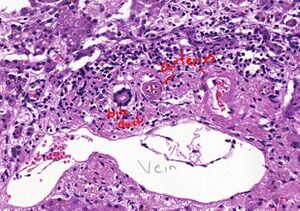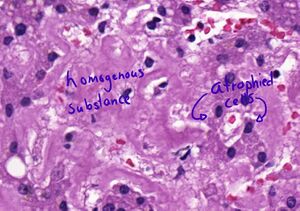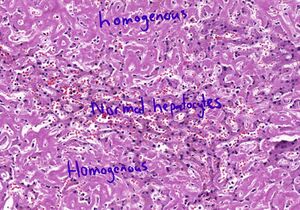12. Amyloidosis of the liver: Difference between revisions
(Created page with "'''Staining''': HE '''Organ''': Liver '''Description''': We can identify the organ by looking for portal triads. In some parts of the slide we can see normal hepatocytes, however in some parts we can see an eosinophilic, homogenous, hyaline (glass-like) substance. Some hepatocytes have small cytoplasm, making them look atrophied. '''Diagnosis''': Amyloidosis of the liver '''Theory''': The homogenous substance is comprised of amyloids. The atrophied hepatocytes have...") |
(No difference)
|
Revision as of 09:00, 9 May 2022
Staining: HE
Organ: Liver
Description:
We can identify the organ by looking for portal triads. In some parts of the slide we can see normal hepatocytes, however in some parts we can see an eosinophilic, homogenous, hyaline (glass-like) substance. Some hepatocytes have small cytoplasm, making them look atrophied.
Diagnosis: Amyloidosis of the liver
Theory:
The homogenous substance is comprised of amyloids. The atrophied hepatocytes have atrophied because they’ve been compressed by the amyloid accumulation.




